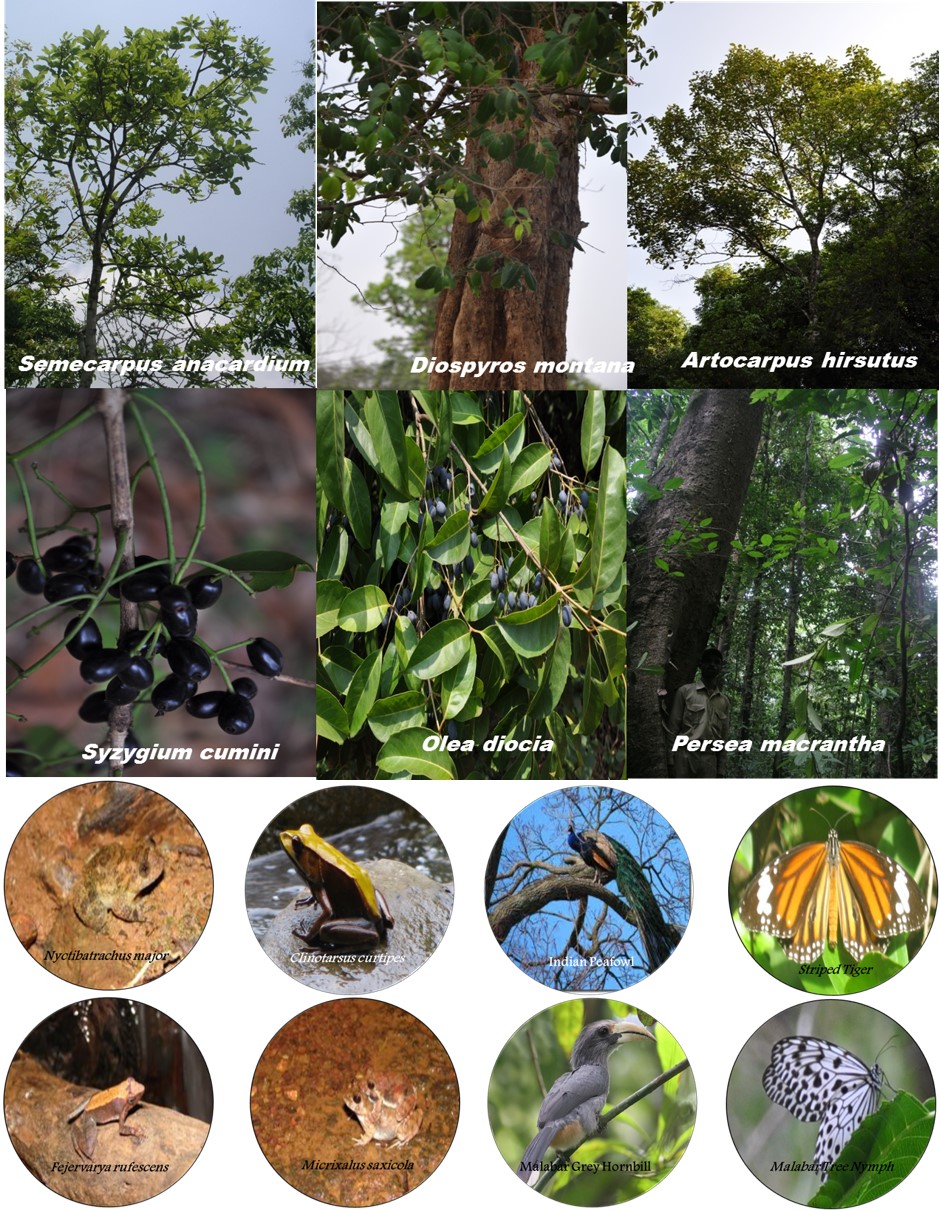|
Study Area
Kali River Basin is the lifeline of the district and water source for major agriculture, horticul-ture, and energy production. The Kali river has a catchment area of 5085.9 km2 spread across districts of Uttara Kannada (Ankola, Karwar, Supa, Yellapur, Haliyal), Dharwad (Kalgatgi, Dharwad) and Belgaum (Khanapura, Bialhon-gal) (Fig. 1). Population in the Kali River catch-ment has increased from 4,97,892 (in 2001) to 5,42,036 (in 2011) as per the Census of India (http://censusindia.gov.in) and is projected to increase to 5,66,065 in the year 2016 at the dec-adal growth rate of 8.8 percent. Population den-sity in the catchment is 111 persons per square kilometer as on 2016. Major Population is in towns such as Dandeli, Haliyar, Dharwad, Karwar, Yellapura, Ramnagar, Virje, Majali, Ammadalli, etc.
The major vegetation types in the Kali basin are broadly grouped as ‘natural vegetation’ which includes evergreen, moist deciduous and dry deciduous forests; ‘plantations or monoc-ultures’ which includes plantations of Tectona grandis (Teak), Eucalyptus sp. (Bluegum) Ca-suarina equisetifolia, Acacia auriculiformis, Acacia nilotica, and other exotics. The most threatened and vulnerable species such as Wis-neria triandra, Holigarna beddomei, Holigar-na grahamii, Garcinia gummi gutta, Hopea ponga, Diospyros candolleana, Diospyros pan-iculata, Diospyros saldanhae, Cinnamomum malabatrum, Myristica malabarica and Psydrax umbellate are found in the basin. The forests are suffering from many detrimental developmen-tal activities and policy interventions, subse-quently leading to the heavy removal of lofty trees across the district (Ramachandra et al. 2016b).

Fig. 1. Study area-Kali River Basin

Fig. 2. Flora and Faunal diversity of Kali River Basin
The dams/reservoirs in Kali River Basin were constructed during post 1980’s, which include Supa dam, Bommanahalli reservoir, Tattihalla res-ervoir, Kodasalli dam, Kadra dam, Kaneri dam, etc., which receives water from Kali River catchment consisting of pristine forest cover of Kali Tiger Reserve (KTR) or Anshi-Dandeli Tiger Reserve (ADTR). The ADTR/KTR harbors di-verse flora and fauna species (Fig. 2) with an area of 1427.35 km2. The KTR was formed by merging Anshi national park, Dandeli Hornbill reserve and Dandeli tiger reserve in the year 2010. The Kali Tiger Reserve (KTR) is a part of 8,800 km2 of tiger conservation landscape comprising Protected Areas and reserved forests of Dandeli Wildlife Sanctuary towards the north of KTR abutting Bhimghad Wildlife Sanctuary and fur-ther connects Radhanagari and Koyna Wildlife Sanctuaries in Maharashtra. The reserved for-ests in the south connect KTR with Bedthi and Aghanashini Conservation Reserves and further down to Mookambika and Sharavathi Valley Wildlife Sanctuaries.
|